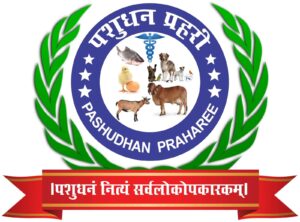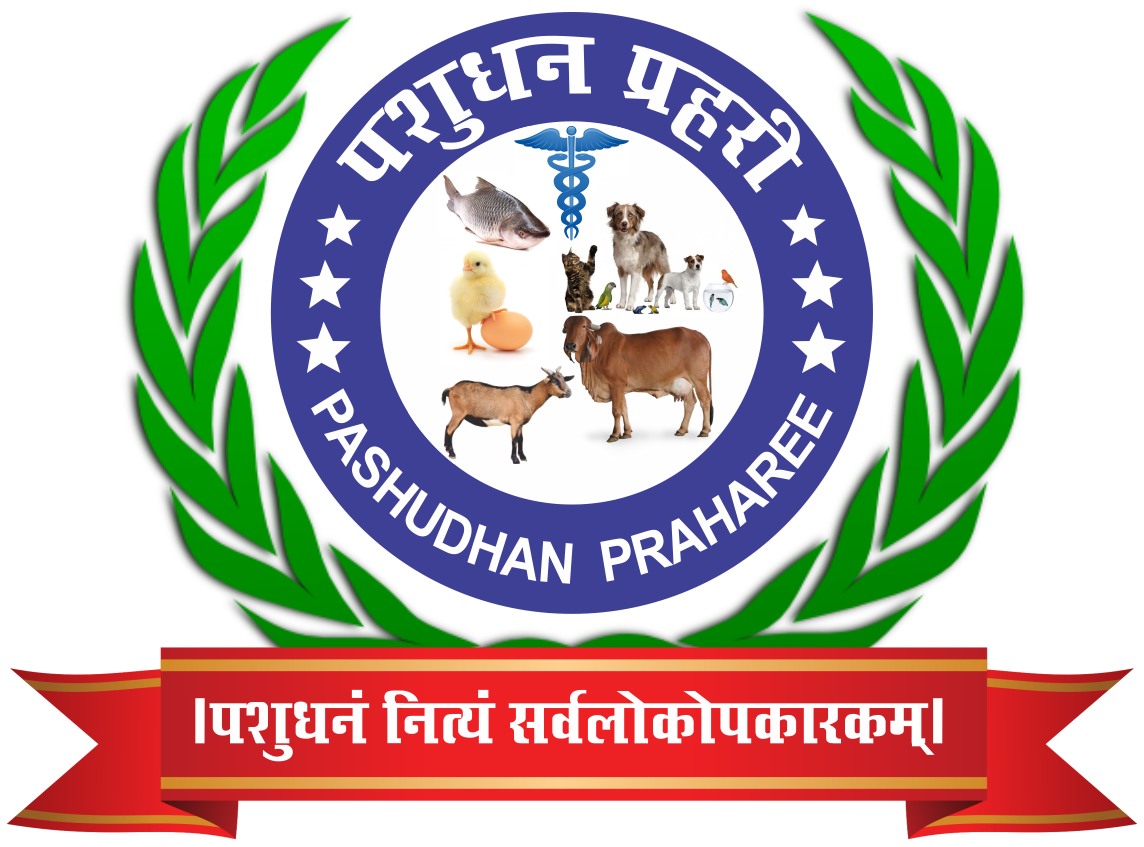Integrative Healing: Uniting Species through Veterinary Homeopathy
Aalisha1, Shraddha Nety2 and Mayank Pal3
1,2Department of Veterinary Pharmacology and Toxicology, College of Veterinary Science & AH, Anjora. DSVCKV, Durg, Chhattisgarh
3Wildlife Health and Forensic Centre, College of Veterinary Science & AH, Anjora. DSVCKV, Durg, Chhattisgarh.
*Corresponding Author: Dr. Aalisha; Email: iamaalisha0412@gmail.com
Introduction:
In today’s rapidly evolving world, the boundaries that separate humans, animals, and nature are becoming increasingly blurred. As we face rising threats from zoonotic diseases, antimicrobial resistance, and environmental degradation, it is clear that a fragmented approach to health is no longer sufficient. “One Health, One Family,” serves as a timely reminder of the need for a holistic vision where every living being is part of a larger health ecosystem.
In this context, veterinary homeopathy emerges as a powerful ally. Rooted in the principle of treating the whole being rather than just the disease, it offers gentle, effective, and sustainable care for animals—care that, in turn, reflects back on human health and environmental balance. The veterinarian’s role today goes far beyond curing infections or managing injuries; it involves championing a shared wellness framework that honors the interdependence of all life forms.
One Health: A Foundation for Collective Wellbeing
The One Health concept is a collaborative, multi-sectoral, and transdisciplinary approach that recognizes the health of humans, animals, and the environment as intrinsically linked. It advocates for collaborative efforts across all domains of health to prevent, detect, and respond to health threats.
The statistics underscore its importance:
- Over 60% of known infectious diseases in humans are zoonotic.
- Three out of every four new or emerging infectiousdiseases in people come from animals.
Veterinary professionals, therefore, are on the frontlines of public health. Their decisions affect not only animal welfare but also food safety, human health, and ecological sustainability.
Understanding Homeopathy: Principles and Philosophy
Homeopathy, developed by Dr. Samuel Hahnemann in the 18th century, is based on several core principles:
- Similia Similibus Curentur (Like Cures Like):A substance that causes symptoms in a healthy organism can be used to treat similar symptoms in a diseased one.
- Minimum Dose:Remedies are given in minimal, highly diluted doses to avoid toxicity.
- Individualized Treatment:Each patient is treated as a unique entity; the goal is to restore overall balance rather than merely eliminating symptoms.
- Vital Force:Homeopathy works by stimulating the body’s vital energy, promoting self-healing and homeostasis.
In veterinary practice, these principles translate to gentle, non-invasive care that respects the physical, emotional, and behavioral dimensions of animal health.
Veterinary Homeopathy: Healing with Compassion and Precision
Homeopathy is a system of medicine that works on the principle of similia similibus curentur – “like cures like.” It uses highly diluted natural substances to stimulate the body’s self-healing mechanisms. In veterinary practice, homeopathy has been used successfully for decades across species, offering treatments that are:
- Non-toxic and free from harmful side effects
- Sustainable and environmentally friendly
- Effective in both acute and chronic conditions
Companion Animals
In urban settings, pets have become integral family members. Homeopathic remedies are used to manage conditions such as:
- Chronic skin allergies
- Behavioral issues including separation anxiety
- Gastrointestinal upsets
- Age-related joint and mobility problems
Veterinary homeopathy provides a holistic and individualized treatment plan that often yields results where conventional therapies fall short.
Livestock and Production Animals
In farm settings, homeopathy contributes to disease control, reduced drug dependency, and improved productivity. For conditions like mastitis, foot-and-mouth disease, parasitic infestations, and digestive issues, homeopathic interventions offer:
- Quick relief with no drug residues in milk or meat
- No need for withdrawal periods
- Cost-effective alternatives to antibiotics and steroids
Countries like Germany, Switzerland, and India have integrated homeopathy into organic and traditional farming with positive results.
Wildlife and Exotic Species
Treating wild or exotic animals presents unique challenges, including stress from handling and the risk of sedation. Homeopathy offers a non-invasive and gentle approach suitable for zoo animals, rescued wildlife, and endangered species.
Examples include:
- Using Arnicafor trauma in elephants
- Administering Ignatiato relieve anxiety in birds
- Applying Hepar sulphurisfor abscesses in wild felines
Agro-Homeopathy: Strengthening the Environmental Chain
Just as animals are part of the health ecosystem, so are plants. Agro-homeopathy is an emerging field that applies homeopathic remedies to enhance plant health, prevent disease, and improve yields. This contributes to the One Health framework by:
- Reducing pesticide and chemical fertilizer usage
- Supporting sustainable agriculture
- Providing healthier food for both animals and humans
Veterinary homeopaths and agronomists increasingly collaborate to create chemical-free, self-sustaining food systems, ensuring better nutrition and lower toxic exposure for all species.
One Family: Building a Culture of Care
The word “family” in this year’s theme extends beyond humans. It reflects the reality that our families now include animals, plants, and even microbial ecosystems. In this expanded family, veterinary homeopathy plays a unifying role.
Empowering Households
When families use homeopathy for their pets, they become active participants in their animals’ healing. This involvement strengthens the human-animal bond, enhances emotional wellness, and reduces long-term healthcare costs.
Uplifting Farming Communities
Homeopathy allows farmers to manage herd health without heavy dependence on pharmaceuticals. This leads to:
- Safer and cleaner animal products
- Higher economic stability
- Empowerment through knowledge and self-reliance
Promoting Community and Wildlife Harmony
In rural areas where humans and wildlife coexist, veterinary homeopathy helps mitigate conflict and manage animal populations in a humane, ecologically sound manner.
Scientific Insights and Field Data
Although mainstream science often calls for more robust data on homeopathy, existing evidence and practitioner experience offer strong support:
- A 2010 study found homeopathic Belladonna effective in reducing symptoms and duration of mastitis in dairy cows.
- Homeopathy has been used in several countries as a preventive tool during avian influenza outbreaks in poultry.
- Organic farms in Europe report up to 70% reduced antibiotic use through integrative practices that include homeopathy.
Homeopathic veterinary colleges, such as those under the Central Council for Research in Homeopathy (CCRH), India, are also gathering data to expand scientific understanding and credibility.
Commonly Used Veterinary Homeopathic Remedies
Homeopathy encompasses thousands of remedies, but several are particularly popular in veterinary use:
- Arnica montana:For trauma, bruises, and post-surgical recovery
- Aconitum napellus:For sudden fear or shock, early-stage fevers
- Hepar sulphuris:For abscesses and pus-forming infections
- Nux vomica:For digestive issues and toxin exposure
- Rhus toxicodendron:For arthritis and joint stiffness
- Ignatia amara:For grief, stress, and emotional imbalance
- Sulphur:For chronic skin issues and general detoxification
These remedies are selected based on a thorough case-taking that considers physical symptoms, behavioral changes, medical history, and environmental triggers.
Challenges and Roadblocks
Limited Training and Institutional Support
Despite its growing popularity, veterinary homeopathy remains underrepresented in formal education. Integration into veterinary curricula is essential for the next generation of practitioners.
Resistance from Conventional Medicine
Skepticism, regulatory barriers, and lack of funding for research hinder broader acceptance. A balanced, evidence-informed approach is needed to bridge the gap.
Need for Standardization
Uniform protocols, quality control of remedies, and professional guidelines are critical for ensuring ethical and effective practice.
The Road Ahead: Embracing Integrative Health
As the world moves toward precision medicine and sustainable health, veterinary homeopathy has a unique opportunity to contribute. Future strategies should include:
- Establishing interdisciplinary networks among vets, researchers, and farmers
- Promoting policy-level integration in national health programs
- Conducting field-based research to document efficacy
- Raising public awareness through success stories and educational outreach
Conclusion: Toward a Harmonious Future
The vision of “One Health, One Family” is more than a theme—it is a global imperative. Veterinary homeopathy, with its deep respect for nature and life, offers a bridge between tradition and modernity, science and empathy, individual care and collective well-being.
This World Homeopathy Day, let us commit not only to healing animals but to healing relationships – between species, between humans and nature, and within communities. Every remedy administered with care and knowledge brings us a step closer to a world where health is shared, and families—of all kinds—thrive together.
References
- World Health Organization (WHO). (2023). One Health. https://www.who.int/initiatives/one-health
- Central Council for Research in Homeopathy (CCRH), India. (2022). Veterinary Homeopathy and its Public Health Applications.
- Bhasin H., Kothari N. (2021). Clinical Applications of Homeopathy in Livestock Health. Indian Journal of Veterinary Integrative Medicine.
- Mathie RT et al. (2014). Systematic Review of Randomised Controlled Trials in Homeopathy. Systematic Reviews, 3(1), 142.
- Hamre HJ et al. (2020). Integration of Homeopathy in European Organic Livestock Farming. Complementary Therapies in Medicine, 50, 102384.



